
Guests
- Jason Boxprofessor in glaciology at the Geological Survey of Denmark and Greenland. He has been studying the Greenland ice sheet since 1994.
Broadcasting from COP21, where 200 nations are in the final stretch of negotiations aimed at reaching an accord to avoid the most catastrophic impacts of climate change, we speak with a scientist who has spent the last two decades tracking global warming from one of the front lines—Greenland’s ice sheets. From 2008 to 2012, Jason Box was the lead author of the Greenland section of the National Oceanic and Atmospheric Administration’s annual climate change report. In 2012, he was one of the first scientists to warn there would be surface melting across the entirety of Greenland within a decade—a prediction that drew scorn from many in the scientific community, until the melting began only a few months later. Box has also participated in protests against climate change, including the 2011 mass protest at the White House. His most recent piece for The New Yorker, co-authored with Naomi Klein, is “Why a Climate Deal is the Best Hope for Peace.”
Transcript
AMY GOODMAN: Yes, this is Democracy Now!, broadcasting live from COP21, where representatives from nearly 200 nations are in the final stretches of negotiations aimed at reaching an accord to avoid the most catastrophic impacts of climate change. Our next guest has spent the last two decades tracking global warming from one of the front lines of climate change—Greenland’s ice sheets.
From 2008 to 2012, Jason Box was the lead author of the Greenland section of the NOAA’s annual climate change report. That’s the National Oceanic and Atmospheric Administration’s annual climate change report. In 2012, he was one of the first scientists to warn there would be surface melting across the entirety of Greenland within a decade—a prediction that drew scorn from many in the scientific community, until the melting began only a few months later. Jason Box has also participated in protests against climate change, including the 2011 mass protest at the White House. His most recent piece for The New Yorker magazine, co-authored with Naomi Klein, is headlined “Why a Climate Deal is the Best Hope for Peace.” Earlier this year, Esquire ran a profile of Jason Box headlined “When the End of Human Civilization is Your Day Job.”
Jason Box, welcome to Democracy Now!
JASON BOX: Thanks.
AMY GOODMAN: So, talk about Greenland and what’s happening and why people should care around the world.
JASON BOX: Well, Greenland ice and ice around the world are really good indicators of climate change. That, and Arctic climate change is proceeding at about twice the rate of the lower latitudes. The impacts are important globally, even though this is a remote place. We—not only sea level rise, which NASA confirmed one meter of sea level rise is locked in by the end of this century, and we can’t rule out more than that. We don’t yet have the models that have specific processes, that we know that are happening in the field from our observations. They’re not encoded in the climate models, so we have to look into the past. And what we see is the last time that atmospheric CO2 was at 400 parts per million, global sea level was at least six meters higher. So, we urgently need to reduce emissions, but also somehow draw down atmospheric carbon. And one great natural technology to do that is in the form of trees and grasses and to restore soil carbon stores. That’s a known kind of technology, natural technology, that we need to urgently pursue now.
AMY GOODMAN: So, how did you end up first going to Greenland? And explain what it looks like as the ice sheet melts.
JASON BOX: We selected Greenland as the climate laboratory because we can conduct experiments and monitor over a large scale, and compare our ground measurements with satellite and climate models. So we’re running a network of measurements. And it’s now going beyond 20 years.
And so, while spending time in Greenland, we see numerous physical things happening that are not yet in the models. For example, the snow line on the ice sheet is rising, and below the snow line is a dark bare ice area. That absorbs a lot more sunlight during these 24-hour sunlit days. That’s one multiplying factor. Another is increasing rainfall on the Greenland ice sheet. That darkens the surface. Warming is bringing more rainfall, more lubrication to the flow of the ice sheet. We observe lakes forming higher on the inland ice. We observe a darkening of the bare ice area that’s due to microbial blooms. Then, wildfire increasing in the Arctic is also something that we’re tracking through a crowd-funded activity called the Dark Snow Project at DarkSnow.org. And so, there’s numerous multiplying factors that we’re finding that just aren’t in the climate models yet.
AMY GOODMAN: What is Jakobshavn?
JASON BOX: The Jakobshavn Glacier is the world’s fastest continuously flowing glacier. It used to have an ice shelf in front of it when I started working in Greenland. And that area, that ice shelf, more than one-and-a-half times the size of Manhattan Island, that ice shelf disintegrated. We didn’t recognize the Jakobshavn Glacier in the year 2003. The landscape had transformed. And so this world’s fastest glacier has more than doubled in speed, and so it is decanting the Greenland ice sheet. And it’s not alone. There are dozens of other marine-terminating glaciers like this. Consequently, the Greenland sea level contribution has more than doubled in the last 20 years. And so, if we start thinking in doubling times—Greenland’s contribution is on the order of 12- to 14-year doubling times—that delivers, globally, from other land ice masses, including Antarctica, the bigger ice sheet, more than a meter of sea level rise by the end of this century.
AMY GOODMAN: So what has to be done? And do you feel what’s happening at COP21, the 1.5-degree Celsius, or 2.7-degree Fahrenheit, target—albeit voluntary target—is important?
JASON BOX: Well, it’s nice to have those aspirations, and it raises hope. That’s for sure. But the numbers that the different countries brought—the U.S. and Canada, for example—they are not consistent with these one-and-a-half-degree or even 2-degree targets. So, this is like goodwill rhetoric. It makes us feel good, but it—without a binding mechanism with teeth, a legally binding mechanism, they can say whatever numbers they want and make us feel good, but, again, the emissions reductions scenarios that are on the table from the United States and Canada fall far short of hitting that or going through that temperature target.
So, really, what we need to be talking about is, you know, that atmospheric carbon level that we can tolerate. And unfortunately, it’s too high now, so we—the conversation, the missing conversation, is also about atmospheric drawdown of carbon. And that’s why I bring up trees and grasslands and restoring growing parts of our planet. We’ve lost one-third of arable land on our planet in the last 50 years. We need to start reversing that. And we can bring humidification back to the Mediterranean. The Roman Empire began deforesting the Mediterranean long ago, and that desertification trend is behind the drought. And we can actually begin reversing that. And it actually—besides bringing moisture back to some of these places and sequestering carbon, it also gives people hope. And it can be a gesture of peace that we can offer around the world.

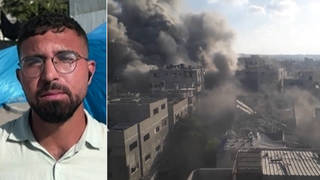
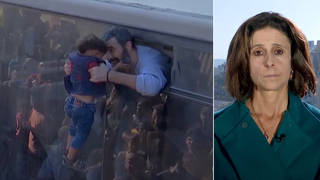
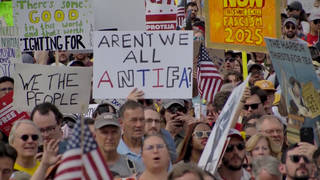
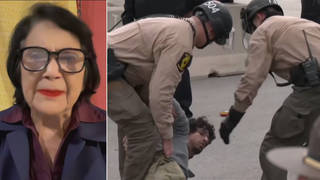





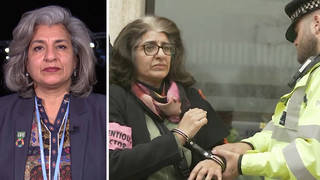
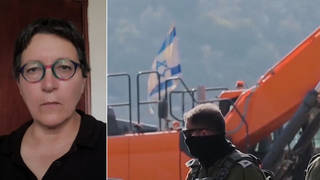
Media Options